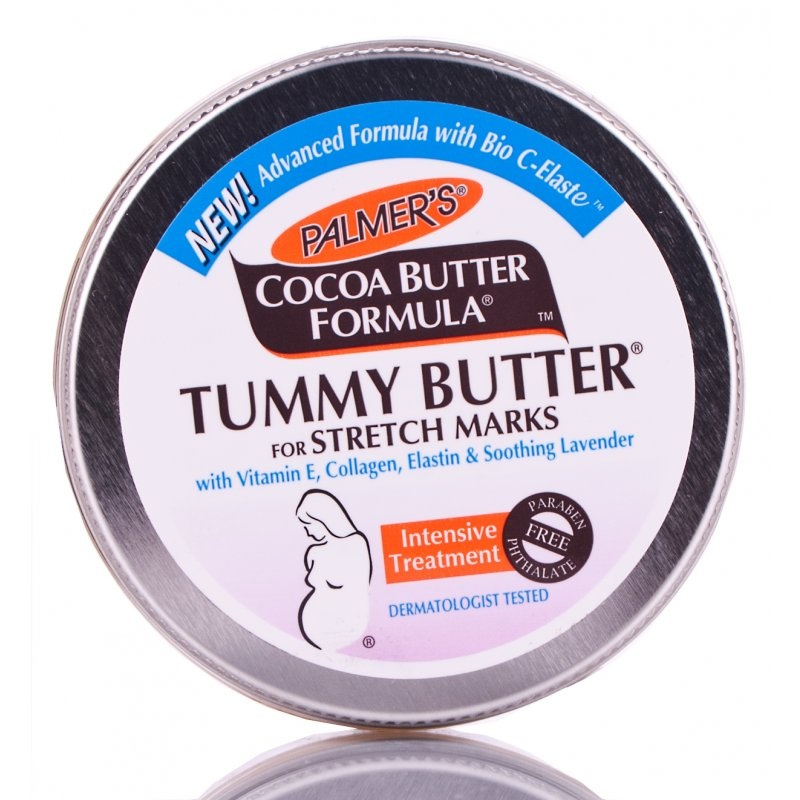Pregnancy is normally an exciting time, filled with preparations and dreams of the new baby. Pregnancy can also bring unexpected bodily changes. You may start to notice red or purplish streaks forming on your body, most commonly on your belly and breasts. They are a sign that the skin is stretching to accommodate and nurture the life growing inside.

Stretch marks, called striae distensae, are seen often, and in varying degrees during pregnancy. They are caused when the elastic fibres and collagen in deeper layers of your skin are pulled apart to make room for your growing baby. When the skin tears, collagen breaks down and shows through the top layer of your skin as a pink, red or purple indented streak. Nearly 9 out of 10 pregnant women develop stretch marks on their breasts, tummy, hips buttocks and/or arms. Stretch marks may appear early or later in your pregnancy. After pregnancy, they may fade to the same colour as the rest of your skin, but they won't go away. You can help minimize the severity of stretch marks by gaining weight slowly and steadily during pregnancy. Any large increases in weight can cause stretch marks to appear more readily.
Can they be
prevented?
- If your mother or your sister developed stretch marks during pregnancy, then you may be more likely to develop them as well. There are a few things you can do that may limit the number of stretch marks you get or minimise them.
- People who put excess weight also often get stretch marks. Avoiding putting on excess weight, whether you are pregnant or not, will mean you have a healthier lifestyle.
- Maintaining a healthy diet will also help to maintain skin elasticity. Eating well during pregnancy is of course extremely important. Pregnancy is not a time for a restricted diet, and dieting will not mean that you avoid stretch marks. Support your body and skin with a natural diet high in antioxidants and be sure to include healthy fats.
- Drink lots of water! Water helps your skin stay moisturised.
- Exercise during pregnancy is beneficial for the skin and good for you in general. Before you start any new exercise program in pregnancy it is wise to consult your doctor.
- Skin brushing - lightly brushing your body all over with a loofah or brush - can stimulate blood flow to the skin.
- Your breasts grow quite a few sizes during pregnancy and will
need extra support, and so good, supportive bras are a must and will
help minimise stretching of breast tissue, though there is no
evidence they will prevent or minimise stretch marks.
Creams
Despite the fact that there is not scientific evidence to prove that they work, there are many different creams and oils that are promoted as helping to prevent stretch marks. These include olive oil, aloe vera, cocoa butter, shea butter, rose hip oil, vitamin E, retin A and centella asiatica extract (a herb also known as Gotu Kola). These are applied externally however it is important to consult your doctor if you are in any doubt about the possible effects of a product, especially during pregnancy. (Retin A cannot be used during pregnancy or breastfeeding).
What can
be done to reduce their appearance?
For most women the treatment of stretch marks is not a priority after the birth of their baby. If you want to try something, it is thought that early treatment of stretch marks shows better results than leaving them until they are years old. New and better ways of using lasers for stretch marks are being actively pursued. In the past, some laser treatments have resulted in worse scarring than the original stretch marks, especially when used by inadequately trained operators. Some women have opted for mini tummy tucks, to tighten up this area. This reduces the appearance of stretch marks, and smooths the skin.
General good fitness and exercising the tummy area can help the tummy to become more toned and this can reduce the indented look of stretch marks, although it can be very difficult or impossible to return your abdomen to its pre-pregnancy state.
Pregnancy changes our breasts too. Breasts may be smaller and less firm than previously. Some find that their breasts are permanently larger. Others find that their breasts slowly regain fat and roundness, with stretch marks becoming barely noticeable, although the breasts do not gain their pre-pregnancy firmness.
Being scar tissue, stretch marks will not tan, and may become more visible under a summer tan. Using a tanning product may help to overcome this - and is safer than spending hours in the sun.
In the real world
Although media images commonly depict images of pregnant or breastfeeding women with blemish-free bellies and breasts, real women know that stretch marks are very common. Attitudes towards stretch marks vary greatly. Some women feel that their stretch marks are somewhat disfiguring, while others accept them as being part and parcel of pregnancy. And yet others are proud of them because they are signs of the amazing process that took place in bringing a new life into the world. And what an amazing process pregnancy is!

No comments :
Post a Comment